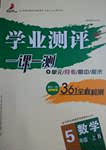题目内容
【题目】Protection Publications
CUSTOMER HEALTH: A GUIDE TO INTELLIGENT DECISIONS Eight softcover edition of leading college text covering all aspects of basic health strategy(策略) for consumers. Includes much information on food fashion and “alternative methods”. Thoroughly referenced. By Stephen Barrett, M. D. , William M. London, Ed. D., Robert S. Baratz, M. D. , D. D. S. , Ph. D. , and Manfred Kroger, Ph. D. 608 pages, $23.00 |
CHIROPRACTIC(手疗法): THE CREATEST HOAX(骗局)OF THE CENTURY? L. A. Chotkowski, M. D. , FACP, describes discoveries made during his half-century of medical practice. Includes reports of cases; the author’s observations at New York Chiropractic College, a chiropractic office, and a chiropractic lecture; and details of critical reports in the media. Second edition, softcover, 208 pages, $15. |
THE WHOLE TOOTH The fundamental guide to protecting your dental health and your pocketbook. Covers preventive care, finding a good dentist, dental restoring, cosmetic dentistry, dental quackery (治疗) and fraud(假牙), and dental insurance programs, including managed care. By Marvin J. Schissel, D. D. S. , and John E. Dodes, D. D. S. Softcover, 284 pages, $10. |
QUACKERY AND YOU The 32-page softcover brochure with special viewpoints by William Jarvis, Ph. D. , suitable for waiting rooms. $1. |
To above prices, please add $3 for first book and $1 for each additional book for postage & handling. Foreign countries add $5 per book. Send orders to Quackwatch, P. O. Box 1747, Allen Avenue, NY 18105. The checks must be in US dollars. We cannot process credit card orders. Please use our order form from amazon.com and include your email address.
【1】What do the four books have in common?
A. The contents. B. The means of cover packing.
C. The prices. D. The dates of publication.
【2】What can you do to search for more information about the books?
A. Buy the brochure. B. Write to the author.
C. Telephone the sellers. D. Visit amazon.com.
【3】How should a Canadian pay if he wants to buy all the four books?
A. Pay $69 in all. B. Pay $65 in total.
C. Pay for them by credit card. D. Pay for them in Canadian dollars.
【4】For whom is QUACKERY AND YOU designed?
A. Those who order some medicine.
B. Those who hole special opinions.
C. Those waiting to see the doctor.
D. Those studying the science of medicine.
【答案】
【1】B
【2】D
【3】A
【4】C
【解析】本文介绍了四本书,包括书的内容,包装方式,页数和价格。
【1】B细节理解题。根据CUSTOMER HEALTH: A GUIDE TO INTELLIGENT DECISIONS中Eight softcover edition of leading college text covering all aspects of basic health strategy(策略) for consumers.根据CHIROPRACTIC(手疗法): THE CREATEST HOAX(骗局)OF THE CENTURY?中Second edition, softcover, 208 pages, $15.根据THE WHOLE TOOTH中and John E. Dodes, D. D. S. Softcover, 284 pages, $10根据QUACKERY AND YOU中The 32-page softcover brochure with special viewpoints by William Jarvis, Ph. D. , suitable for waiting rooms. $1.可知,这四本书都谈到了“包装方式”,是软封面、平装书。故选B。
【2】D细节理解题。根据最后一段最后两句We cannot process credit card orders. Please use our order form from amazon.com and include your email address.可知,如果想寻找更多的关于书的信息请登录amazon.com。故选D。
【3】A计算题。根据每本书的价格可知,四本书总共是$49;再根据Foreign countries add $5 per book.可知,他要想买四本书,a Canadian pay应该是$49+$20=$69,故选A。
【4】C推理判断题。根据QUACKERY AND YOU(庸医和你)中The 32-page softcover brochure with special viewpoints by William Jarvis, Ph. D. , suitable for waiting rooms. $1.可知,这本书是为那些等着看病的人准备的。故选C。

 活力课时同步练习册系列答案
活力课时同步练习册系列答案 学业测评一课一测系列答案
学业测评一课一测系列答案